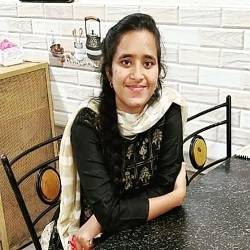Current Affairs 2021: Highlights of State of Education Report 2021 for India
By Deepthi
UNESCO released the State of Education Report 2021 for India. Read here the important findings and recommendations of the report.
The acronym of SOER is State of The Education Report. The key aim of the State of the Education Report is to serve as a reference for enhancing the implementation of the National Education Policy (NEP) and also towards the awareness of the Sustainable Development Goal (SDG)
UNESCO released the State of the Education Report (SOER) 2021 for India on October 5, the day of World Teacher’s Day. The theme of the State of the Education Report (SOER) for India is “No Teacher, No Class”. The report mainly targeted on Goal 4c of SDG.
This State of the Education Report is the yearly flagship publication of UNESCO, New Delhi. This report was adopted based on expansive research. This is the third edition of the State of the Education Report. This annual report mainly focuses on the theme of teachers, teaching and teacher education.
The National Education Policy (NEP), approved in 2020, acknowledges teachers as a vital component in the learning process and also focus on the significance of their recruitment, uninterrupted professional development, better work environment and service conditions.
According to the analysis of the current state of teachers in India, highlighting the best practices, the SOER for India 2021 aims to serve as a reference for enhancing the implementation of the NEP. SOER also shows the teacher’s experience of ICT and the effect of the COVID-19 pandemic on the teaching profession and children’s education. The pandemic, which was in progress, drew attention towards the career of children, the profession of teachers and the importance of education.
Most of the teachers were found to have a positive frame of mind and possess trust about integrating technology in education, even though they recognize a lack of professional skills. Also, SOER highlighted the provocation of complicated teaching routines as well as their professional development.
All these points are mainly deployed on the analysis of Periodic Labour Force Survey (PLFS) and from Unified District Information System for Education data.
Findings of State of the Education Report for India
SOER mainly targets the Goal 4c of the Sustainable Development Goal (SDG) specifically focussed on teachers. It mentions that by 2030, essentially increase in the supply of qualified teachers as well as international cooperation for teacher training in well developing and least developed countries.
According to the survey report, there are nearly 1.1 lakh single-teacher schools in the country. Around 89 per cent of these are in rural areas. Based on the Pupil-Teacher Ratio (PTR), 11.16 lakh additional teachers are required to bridge the gap and maintain the standard PRT.
In India, if we look into the performance of our states, Tripura state has the least number of women teachers (32%) followed by Assam (39%), Jharkhand (39%) and also Rajasthan (39%). Chandigarh tops the list in this respect with 82 % women teachers in the schools.
Shortage of government jobs leads to an increase in private jobs. The number of teachers in the private sector also affects the education system. According to the survey report the number of teachers hired in the private sector increase in size from 21% in 2013-14 to 35% in 2018-2019. Under the Right to Education Act, it specifies that the Pupil-Teacher Ratio (PTR) must be 1:30 in classes 1st to 5th and 1:35 in higher classes.
The overall accessibility of electronic devices like desktops or laptops in schools is 22% for all over India. And coming to the rural area we can observe much lower provisioning around 18% than in the urban area around 43%. The access to the internet is 19% all over India.
This account contains a repository of informative articles by external authors with domain expertise in various aspects of guiding students on how to go about pursuing their undergraduate and postgraduate studies in... Read Full Bio


